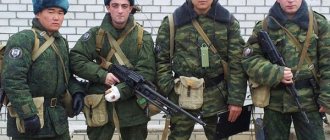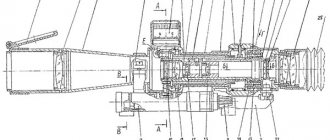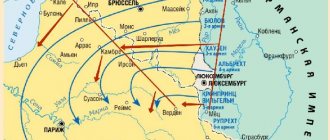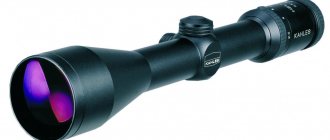The French Foreign Legion (Légion étrangère) is an elite military force that recruits volunteers from any country, including France itself, to serve domestically and abroad.
There are many reasons why people want to join a foreign legion: from obtaining EU citizenship to the desire to leave their homeland. And doing this, if you have good physical fitness and no criminal record, is not so difficult. To express a desire, no special education or knowledge of the French language is required, and the set of documents for submitting an application is minimal.
As of 2022, approximately 8,900 men from over 100 countries served in the legion's 11 regiments.
Conditions of enrollment
Only men can become legionnaires. At the time of arrival at the pre-selection site, the age of the candidate must be at least 17.5 and not more than 39.5 years.
An applicant for enrollment in the ranks of the foreign legion must not have a criminal record. However, there is a small caveat: only criminals with serious charges such as murder, rape, or drug trafficking receive a categorical refusal to serve. Petty hooligans, on the contrary, are accepted with joy - it is believed that their desire to say goodbye to their old life and integrate with the new is higher.
It is not necessary for a future legionnaire to have any education. He is required to at least be able to read and write in his native language - this is stated on the official website of the legion. It is also not necessary to know French - after enlistment, during basic training, each recruit is given a certain set of words to memorize.
It is also necessary to meet certain physical criteria. The recruit's body mass index (BMI) should be between 20 and 30 kg/m². For example, the BMI of a person 1.75 m tall and weighing 72 kg would be 72 kg/(1.75m×1.75m) = 23.5 kg/m². This indicator corresponds to the norm.
On the day of arrival, the candidate must be prepared to undergo all required physical fitness tests and medical examinations. Of course, he should not have any restrictions on health loads. You must also be able to swim at least 25 meters.
Some medical criteria have been established for candidates:
- Having healthy or treated teeth. The chewing activity coefficient is at least 40%.
- If there were any surgical interventions, the presence of documents indicating the absence of complications.
Patients with tuberculosis, hepatitis, cancer, HIV, diabetes, obesity, anemia, psychiatric problems, or too little vision or hearing are not enrolled in the French Foreign Legion. If the applicant has undergone any operations, their impact on physical capabilities is taken into account. In particular, people with meniscus damage, complete loss of one finger, sore knee joints, repeated dislocation of the kneecap, operated hernia with complications, etc. are not accepted into the legion.
Mandatory items that a recruit candidate must have with him:
- 1 pair of sneakers;
- 3 panties;
- 3 T-shirts;
- 3 pairs of socks;
- toiletry set (soap/shower gel, razor and shaving foam, towel, shower slippers);
- cash (no more than 50€).
Audio/video players, bank cards and various valuables are considered useless. All types of weapons, vehicle keys and house keys are prohibited.
To apply for enrollment you will need the following documents:
- for holders of citizenship of one of the Schengen countries - a national identity card or an unexpired passport;
- for other foreign citizens - an unexpired passport;
- for candidates under 18 years of age - permission from parents or legal representatives (if one or both parents are deceased, death certificates are provided);
- emancipated candidates under 18 years of age - a document on emancipation;
- optional, but desirable - birth certificates of parents with information about full name, date and place of birth (it is better to have additional copies translated into French);
- optional, but desirable - any useful administrative documents (temporary residence permit, marriage certificate, divorce certificate, birth certificate, etc.);
- medical card (if available).
The candidate selection process lasts from 2 to 3 weeks. Those who fail are given a small monetary compensation. Then the basic training of those who have passed the selection begins, which lasts approximately 4 months (15-16 weeks). The new recruit is given a new first and last name. In about a year, he can begin to serve under his real name and surname, when his identity is fully documented.
Modern French Foreign Legion
In this article we will complete the story about the French Foreign Legion. Currently, the soldiers of his regiments in France are treated much better than fifty years ago. At least the legion's military personnel are not now considered to be criminals and socially dangerous psychopaths. However, there is no special sympathy for them, especially in left-wing and liberal circles. The legionnaires themselves joke that the French love them only one day a year - during the Parade in honor of the taking of the Bastille, when their units solemnly march along the Champs-Elysees.
Sappers (pioneers) of the Foreign Legion. Military parade in honor of the anniversary of the storming of the Bastille, Paris, Champs Elysees. 2016
Weapons of soldiers of the Foreign Legion taking part in the parade in honor of the storming of the Bastille
Regimental flags of the first and second regiments of the Foreign Legion, Paris, 2003
There were times when the number of the Foreign Legion reached 42,000 people (the beginning of World War I); now, according to various sources, it numbers from seven and a half to eight thousand soldiers and officers. Jean Morin (namesake of the last commander of 1e REP, Jeanpierre's successor), defense attache of the French Embassy in the Russian Federation, in an interview with the Ekho Moskvy radio station, which he gave on April 24, 2010, named the number 7,600 people. Probably, his data should be trusted, since since August 1, 2014, he has been the commander of the units of the French Foreign Legion.
Lieutenant General Jean Morin, graduate of the Academy of the General Staff of the Armed Forces of the Russian Federation, former military attaché in Russia, commander of the Foreign Legion
Foreign Legion commander Jean Morin and soldiers of the Third Regiment. French Guiana
Of the 11 regiments of the legion, 7 are now based in France: in Aubagne, Castelnaudary, Calvi (Corsica), Orange, Avignon, Nîmes and St. Cristolier, 4 are outside: in Djibouti, French Polynesia, the island of Mayotte (Comoros archipelago) and French Guiana.
Locations of the regiments of the French Foreign Legion
The headquarters of the entire legion is now Aubagne (a city about 15 km from Marseille): the Vienot barracks is home to the First Regiment (1 RE), here after the evacuation from the Algerian city of Siddi-bel Abbes, which the legionnaires affectionately called the Beautiful Abbes (in it , by the way, spagi were also located) the main headquarters of the Foreign Legion and its command were transferred.
Barracks at Siddi Bel Abbes in the 19th century
The unremarkable building of the General Headquarters of the Foreign Legion in the city of Aubagne
This monument to the fallen soldiers of the Foreign Legion was erected in Siddi Bel Abbes in 1932:
We see the globe lying on an armful of palm branches, which is guarded by four figures symbolizing the legionnaires of Algeria, Mexico, colonial campaigns and the First World War. The initiator of the creation and installation of this monument was the “father of the legion” - Colonel Paul-Frederic Rollet (he was described in the article “Dogs of War” of the French Foreign Legion). At his request, the legionary of the colonial campaigns was given a resemblance to Major Brundso.
Major Brundso
Leaving Algeria in 1962, the legionnaires brought him to Aubagne:
The first regiment is now a training regiment; the main function of its military personnel is the primary training of recruits.
The Second Infantry Regiment, which was formed back in 1841 on the basis of the 4th and 5th battalions of the First Regiment, is located in the Wallong barracks (Nîmes). It is curious that the regimental song of the second regiment is the German “Anna Maria”.
Wallong Barracks, Nimes
Caserne 2e REI, Nimes
Joint exercises of the second infantry regiment and the air engineer regiment of the Foreign Legion. From 2e REI - 5th company, from 1er REG - engineer platoon and medical team
The famous 13th semi-brigade is actually now a regiment, but in memory of past merits it has retained its name.
The 13th Demi-Brigade of the Foreign Legion passes through Roman ruins. Lambaesis, Algeria, 1958
Until 2011, it was headquartered in Djibouti. In these photographs we see soldiers of the 13th demi-brigade:
Soldiers of the 13th Demi-Brigade, Djibouti
Legionnaires in Djibouti
And here is a French combat reconnaissance vehicle ERC 90 Sagaie of the 13th demi-brigade in the vicinity of Djibouti, photograph from 2005:
French ERC 90 Sagaie
Then the 13th semi-brigade was transferred to Abu Dhabi (UAE), and has now returned to France.
In this photograph, the fourth regiment of the Foreign Legion leaves the barracks of Danjou, Castelnaudary, France (1980):
This regiment houses an officer school and a school for non-commissioned officers.
Many recruits who went to study at the Castelnaudary school remember the time spent there as a nightmare: they had to work literally to the point of exhaustion.
In addition to the infantry, the Foreign Legion has parachute, tank (armored cavalry), and engineer regiments (by the way, currently only sappers are allowed to grow a beard).
Paratroopers of the Second Parachute Regiment of the Foreign Legion
The legion's parachute regiment (2e REP, located in the Raffali barracks, Calvi, Corsica) includes special forces units, which are staffed by volunteers with the rank of at least sergeant - CRAP (Commandos de Recherche et d'Action dans la Profondeur).
GCP (Parachute Commando) member from 2e REP (left) with a 17e RPG, March 8, 2013
The 2e REP regimental holiday is celebrated on September 29, the day of the Archangel Michael, who is considered the patron saint of paratroopers.
All regiments of the legion are part of larger military formations of the French army. For example, the 2nd Parachute Regiment is part of the 11th Parachute Brigade, and the 1st Armored Cavalry is part of the 6th Light Armored Division.
The most difficult service is considered to be in the third infantry and second parachute regiments. It is difficult to serve in the parachute regiment due to constant high loads and an extremely strict daily routine. Moreover, some companies of this regiment have their own unique training programs: the 1st company specializes in battles within the city, the 2nd company in warfare in the mountains, the 3rd is engaged in naval operations, the 4th company carries out sabotage and reconnaissance actions.
Third Company of the Second Parachute Regiment of the Foreign Legion
2e REP legionnaire at Calvi, Corsica, 1965
The Third Infantry Regiment was previously stationed on the island of Madagascar, it is the second in the legion in terms of the number of awards, and its regimental holiday falls on September 14, the date of the breakthrough of the Hindenburg Line in 1918. It is currently located in Guiana, a place that the French used to call the “dry guillotine”: back in the first half of the 19th century, the mortality rate in prisons of three nearby islands (Ile de Salut archipelago) and three mainland ones reached 97%.
French Guiana, map
The most famous convict of Guiana is the former commander of the Rhine and Northern armies, General Pichegru, whom Napoleon on the island of St. Helena called “the most capable of the generals of the Republic.” By the way, he became one of the few who managed to escape from Guiana. Another “celebrity” of convict Guiana was the anarchist Clément Duval, who also escaped from the notorious “Devil’s Island” in 1901.
Currently, legionnaires traveling to the “tropical paradise” of this overseas department of France receive up to 14 vaccinations against various diseases.
The main spaceport of the European Space Agency (Kourou) is located in Guiana, the protection of which is one of the tasks of the third regiment of the legion. And so that the legionnaires do not get bored, the Center d'entrainement a la foret equatoriale - a training center for survival in the jungle - was built nearby. The training course consists of modules of varying complexity, the simplest of which teaches you to simply not die within four days (under the supervision of an experienced instructor). The second level of difficulty is covert movement, ambushes, reconnaissance and surveillance. The third is training in unit command during sabotage or counter-guerrilla operations. The fourth is an autonomous raid with a minimum survival kit. Legionnaires regularly receive injuries during such activities, often life-threatening.
Legionnaires in the jungles of Guiana
Banner of the Third Regiment of the Foreign Legion
The “youngest” formation of the Foreign Legion is the second engineer regiment (2-e REG), created in 1999. It specializes in mountain operations and is part of the 27th Mountain Infantry Brigade (27e brigade d'infanterie de montagne). It is located in the city of Sant Cristol.
Soldiers of the Second Engineer Regiment:
2REG Foreign Legion
And here we see the training of legionnaires of the DLEM unit (de Légion étrangère de Mayotte), Mayotte island, 2007:
This is the smallest unit of the Foreign Legion in terms of numbers, its motto is the Latin phrase Pericula Ludus (something like “Pleasure in danger” or “Danger is my game”).
DLEM unit insignia, worn on the beret
Those of you who have read the article “Bob Denard, Jean Schramm, Roger Volk and Mike Hoare: the fate of the condottieres” should remember that it was the legionnaires of the DLEM unit who in 1995 arrested the famous mercenary king Bob Denard in the Comoros Islands, who wanted to arrange this another coup d'état in the state.
Despite the fact that the Foreign Legion is currently one of the most combat-ready units of the French army (it is often called the “tip of the French spear”), its rank-and-file soldiers receive regular pay (a modest base salary of 1,200 euros) and do not have advantages in allowances. compared to other parts.
Basic salaries of military personnel of the Foreign Legion
During hostilities, the salary of military personnel increases significantly (second numbers in the table above). Parachutists receive an additional 600 euros.
Jean Morin, already mentioned by us, stated in his interview that in the Foreign Legion
“Non-commissioned officers are paid below the average in France, like skilled workers at the beginning of their careers. Experienced non-commissioned officers receive salaries like school teachers... Senior officers receive salaries like senior personnel of enterprises. This means above average in France.”
The number of children in a legionnaire’s family also affects the salary.
After being wounded or injured, for the time spent in the hospital, legionnaires also receive a salary increase of 50 euros per day. Insurance payments are also provided - up to 240 thousand euros. In the event of death, relatives indicated by the legionnaire himself can claim compensation of 600 thousand euros.
Since the Foreign Legion is a closed structure, its officers cannot count on the highest positions in the French army. The pinnacle of their career is the rank of brigadier general, which is usually awarded to the commander of units of the Foreign Legion, and colonel, the commander of one of the regiments. However, only a few make it to positions higher than these and in other military formations in France.
The legion practices punishments, which can be material (fines), disciplinary, but more often physical: from 30 to 50 push-ups. In winter, as a punishment for wrongdoing, you can spend the night on the street under a thin blanket:
According to the stories of modern legion veterans, sometimes more “traditional” methods of “physical influence” and “education” are used, but, as a rule, they are not systematic.
After a year of impeccable service, a serviceman is awarded the rank of second-class legionnaire. In another two or three years he can apply for the rank of corporal. But to obtain the rank of sergeant (chief corporal), length of service is not enough - you also need to graduate from non-commissioned officer school. In the absence of serious violations of discipline after 8 years of service, a bonus in the amount of two annual salaries is paid.
There are no differences in rations in the Foreign Legion - no halal or vegetarian menu.
A rather modest legionnaire's breakfast
According to reviews from those who served, the food in the legion canteens is monotonous, and the food is not very tasty. The menu compilers are apparently inspired by the aphorism of Alexander the Great:
“The best cooks: for breakfast - a night transition, for lunch - a meager breakfast.”
This photograph found on the Internet shows breakfast in Castelnaudary, where the fourth regiment of the legion is stationed:
The exception is the Christmas Day dinner, which is the Legion's second "special" day (the first being the Bastille Day parade). The third and last unusual day is a holiday in honor of the anniversary of the Battle of Cameron (it was described in the article “Dogs of War” by the French Foreign Legion).
Military band of the Foreign Legion at the Cameron Festival, Aubagne, 2007
It is said that Cameron's holiday is reminiscent of the Saturnalia in ancient Rome: soldiers and sergeants "switch places" and privates even receive "breakfast in bed": black pudding (le Boudin) and coffee with rum, but without sugar. The youngest legionnaire is appointed head of the barracks, and sergeants are involved in cleaning the premises. But it is unlikely that ordinary legionnaires, remembering that there are still 364 (and sometimes 365) days a year, abuse their “rights” too much.
In addition, each combat unit of the Foreign Legion has its own regimental holiday.
The annual leave of a legionnaire is 45 working days. In addition, single legionnaires after retirement can live in one of the “veteran houses”, for example, in Domaine Capitaine Danjou.
Many sources claim that homosexuals are still not accepted into the Foreign Legion. Another requirement for recruits is to be unmarried: they can marry after two years of service, and this will require official permission from the commander.
But recruits are not required to know French - they will quickly learn it during the training process under the “sensitive guidance” of a strict sergeant. Usually a recruit is assigned a partner who knows French well, and for every misunderstood word both receive punishment.
The only benefit is the possibility of obtaining French citizenship and a pension.
Documents for obtaining French citizenship can be submitted after 3-5 years, but they say that after completing the first contract it is easier to obtain a resident card valid for 10 years.
A legionnaire's pension cannot be called very large - from 800 euros; its size is influenced by the place and time of service, and for paratroopers - also by the number of jumps. Previously, the minimum length of service was 15 years; currently, depending on the circumstances, it ranges from 17 and a half to 19 years.
But this is enough to make service in the Foreign Legion look attractive in the eyes of people from poor countries (now soldiers of 130 nationalities serve in it). There are currently two pre-selection centers to which candidates from all over the world go: camps near Paris and in Aubagne (Provence).
Aubagne, Court of Honor of the Foreign Legion
In addition to pre-selection centers, there are legion recruitment bureaus in nine cities in France, where you can (in exchange for a passport) get a ticket to Paris or Aubagne.
The competition for admission to the Legion is comparable to the competition for admission to leading universities in France and even surpasses it (the exception is people with medical education, who are in a special position and often enter “out of competition”).
Jean Morin, quoted here, said in an interview in 2010:
“We [in the French army] do not have a recruitment problem. For the rank and file, maybe it’s like a competition, 2 people per place. For non-commissioned officers there may be 4 per place or 5, in the Foreign Legion - 8 per place
"
I admit, I recently almost fell out of my chair when I read literally the following in one article:
“A French legionnaire only needs to do four pull-ups, have healthy teeth and a little intelligence.”
However, various sources provide the following physical training standards for candidates: 10 pull-ups, 30 push-ups, 50 squats, climb a six-meter rope without using legs, run 2800 meters in 12 minutes.
Soldiers of the second infantry regiment of the Foreign Legion, 2013
A test to determine the degree of mental development, of course, is also carried out. Recruits' age: from 17 to 40 years. However, persons under 18 years of age must bring with them permission from their parents.
The most striking and memorable detail of the Foreign Legion uniform is the famous white caps (Képi blanc), which, however, are worn only by privates (both in dress and everyday uniform). Caps are presented to recruits after taking the oath. Before this, the future legionnaire needs to undergo a forced march test with full combat gear, which can last more than a day, and the distance traveled can reach 60-70 km.
Legionnaires in caps
One of the official songs of the legion is called “White Caps”:
“It just so happened that our fate is a battle, and pain that must be endured. We didn’t choose our destiny—fate chose us. And the guarantee of this is the strength of our souls, the strength of our hands and hearts, Not choosing the easy road, knee-deep in mud, the White Caps go forward. Above the road are the banners of the White Caps - and the road belongs to them. And behind us is hatred, And in front of us is the rumor that we are murderers, Covered from head to toe in black mud. The White Caps are moving forward. We die on the road. We die - but we win in battle, Swallowing the black dirt and the bitterness of loss, the White Caps go forward. Fate smiles on those who are furious, proud - those whose blood is hot. "Honor and loyalty!" - we carry these words on our banners From battle to battle. And choking on that mud, which is blacker than that, the White Caps go, go forward.”
Later, green berets appeared, on the right side of which there is a stylized image of a grenade with seven flames. They are not worn with a dress uniform.
During the first four months, before taking the oath, the recruit can leave the legion at any moment (the second parachute regiment is the leader in the number of “refuseniks”). After this, it takes up to a month to consider the resignation report, and usually this month turns out to be one of the worst in the life of a “deserter”.
The press secretary of the Foreign Legion, Lieutenant Gregory Gavrois, not too politically correct, once said that a typical recruit of this unit is “a restless person with a fragile psyche, who has decided to change the country, who has lost his roots, seeking to start life from scratch.” And therefore the advertising slogans of the Foreign Legion are the call “Change your destiny!” and defining it as a “second chance school.” When selecting, they still turn a blind eye to minor offenses of candidates, but they try to exclude people who have served sentences for serious crimes, accused of extremism and drug trafficking. “A legionnaire is rarely an angel, but never a criminal,” the official website of the Foreign Legion now assures.
Colonel Pierre Framager is more optimistic:
“I’m not saying that foreign players are the best, but they are among the best! They have given themselves a new challenge in life and have every reason to win.”
Promotional poster of the French Foreign Legion
And this legion advertising poster offers to “look at life in a new way” (or “see a different life”?)
The legion's own magazine ("Kepi Blanc") should help the recruit get acquainted with the history of this military unit:
After the collapse of the USSR, the legion included many people from the former Soviet republics (as well as countries that were members of the Warsaw Pact), according to some sources, up to 30% of the total personnel. In second place are immigrants from Latin America - 25%, least of all Asians - 8%. As a result, the official website of the legion now has a Russian-language version (in addition to French and English).
A Frenchman who wishes to join the legion as a private receives a new passport, in which he is listed as a citizen of some French-speaking country. These could be Switzerland (where there are French-speaking cantons), Belgium, Luxembourg, Canada. This little trick allows French presidents to avoid awkward questions from journalists about the deaths of French citizens inexplicably where and why. And mercenaries without family and tribe and with a suspicious biography... Who is interested in them, who will count them? It is believed that such “former French” in the legion are now about 20% of the total number of military personnel.
In order to become an officer, you must first obtain French citizenship, but this is still given very reluctantly before dismissal.
Museum of the Foreign Legion, awards for bravery
The Foreign Legion units are the only ones where women are officially prohibited from serving. Susan Travers, who became the only exception to this rule, was described in the article “The French Foreign Legion in World Wars I and II.”
The women who now work in the structures of the Legion (laundresses, cleaners, cooks and others) are civilian employees, they are not legionnaires.
They say that soldiers and sergeants who served in the legion are willingly accepted into modern private military companies, which were discussed a little in the article “Private military companies: a solid business of respected gentlemen.”
And many former legionnaires, those who do not like the harsh order of the French barracks, or those who cannot find a place for themselves in peaceful life, take advantage of the opportunity to find employment in these structures.
In the next article, as promised earlier (in the article “Zouaves. New and unusual military units of France”), we will talk about the Zouaves of the armies of other countries.
Contract
The validity period of a legionnaire’s first contract is 5 years.
At the end of the first contract, the legionnaire decides to continue his career. He can leave the legion or enter into subsequent contracts, the duration of which varies from 6 months to 5 years.
Clothing, food and accommodation in the barracks are free. In addition, a legionnaire receives a standard salary of 1,280 € per month. Various additional payments are added to this salary: for field trials, work abroad, Airborne Regiment bonuses, etc.
Each legionnaire is given an annual leave of 45 working days. He can go home for this period or vacation in another country if he serves under his real name and has all the documents necessary for travel.
Legendary Unit
Over the one hundred and eighty-four years of the expeditionary force's existence, about 650,000 people served in it. More than 36,000 of them died in battle. The unit was not spared by the colonial operations of France and not a single significant warrior in the world. The French Foreign Legion participated in two world wars and more than thirty local armed conflicts in Europe, Africa, the Middle and Far East, and even in Mexico. He also happened to fight on Russian territory: in November 1854, the Legion took part in one of the episodes of the Crimean War - in the battle of Inkerman. It had its largest numbers at the beginning of the First World War - almost 43,000 fighters of more than fifty nationalities.
Obtaining French citizenship and benefits
A legionnaire can apply for citizenship only after 3 years of service. In case of injury during hostilities, citizenship is granted regardless of length of service. Alternatively, you can obtain a residence permit after the end of the first contract.
Legionnaires have the right to marry if they have restored their real identity (by petition, but not earlier than after 1 year of service) and have a sergeant rank (for example, Sergent, Sergent-Chef, Adjudant), or the rank of corporal Caporal, Caporal-Chef (if, minimum 7 year contract).
To receive a pension, legionnaires must serve 19.5 years.
Elite armed forces of Europe
Over the decades, the French Foreign Legion has evolved from a gang of cutthroats and renegades into an elite unit of constant combat readiness. The personnel from 140 countries of the world includes 5,545 privates, 1,741 non-commissioned officers and 413 officers. 11 units of the Legion are deployed both on the territory of France itself (continental, on the islands of Corsica and Sardinia) and in overseas possessions. Among them:
- Kourou (French Guiana) - the European space center is located here.
- Mururoa Atoll in the Pacific Ocean is a nuclear weapons testing site.
- The island of Mayotte (Comoros archipelago) is an overseas department of France.
- UAE – protection of oil refining industry facilities.
The regiments are also deployed in Afghanistan, New Caledonia, Cote d'Ivoire and Djibouti. The French Foreign Legion carries out tasks to restore and maintain peace, and also carries out special operations in the interests of the state's foreign policy (fighting in the jungle, neutralizing terrorists, freeing hostages). Personnel are recruited to provide humanitarian assistance. The command is located in the city of Aubagne, 15 km from Marseille.
Where do they recruit?
The personnel is recruited from men aged 17 to 40 years. If anyone is interested in the question of how to get into the French Foreign Legion, then you should know that recruiting centers are located only in France. There are fifteen bureaus in major cities, including Paris. Embassies, consulates and the Legion itself do not provide any assistance in issuing migration documents. Moreover, a recruit intending to cross the threshold of a mobilization point must be in the country legally. We must not lose sight of the fact that mercenarism in many CIS countries is prosecuted by law, but there are legal loopholes. You can go on a tourist visa to one of the Schengen countries, and then take a train or bus to any recruiting point. The central filtration camp is located near Marseille, in the city of Aubagne. From collection points in French cities, volunteers are sent here once or twice a week.
The largest military operations in which legionnaires took part
- Participation in the assault on Sevastopol (1853-1856)
- Cargo protection in Mexico (1863-1867)
- War for the French Protectorate in Indochina (1883-1885)
- Fight against the liberation movement in Madagascar (1895)
- Participation in the First and Second World Wars
- Indochina (1940—1954)
- Algeria (1953-1961)
- Counterinsurgency in Zaire (1978)
- Lebanon (1982-1983)
- Persian Gulf, capture of Iraq's Al Salman airport (1991)
- Peacekeeping actions in Magadisha, Bosnia (1992-1996)
- Kosovo (1999)
- Afghanistan
- Mali (Africa)
Comment to the article:
A similar unit, as an alternative to private military companies (PMCs), which have been controversial recently in connection with the events in Syria, could be created in Russia. Yugoslavia, the Middle East, South Ossetia, Abkhazia, Vietnam, Cuba - this is just a small list of countries where we could maintain our influence without the use of a regular army.
Only chance
The principle of recruiting rank and file from foreigners continues to this day. For many residents of third world countries, service in the French Foreign Legion is the only chance to break out into the world. A third of the personnel are from Eastern European countries, a quarter are from the Latin American world, and the rest are French who want to start life from scratch. After five years of service, natives of the country are given the opportunity to change any two letters in their surname and receive new documents.
Heraldry, form and unique traditions
The emblem of the French Foreign Legion is a stylized 19th-century graphic of the rising flame of an exploding grenade. This unique coat of arms is also depicted on the formation’s standard. The flag is a diagonally divided vertical rectangle. The upper green segment means the new homeland of the legionnaires, the red one means the warrior’s blood. During the battle, the flag is turned over - blood is in the homeland.
The motto is the exclamation: “Legio Patria Nostra” (The Legion is our homeland). The uniform of the French Foreign Legion contains some extravagant attributes that at first glance have nothing to do with military affairs. The legionnaires marching in the ceremonial square are dressed in gray trousers. The waist is cinched with a blue sheepskin scarf. Its length is exactly 4.2 meters, width - 40 cm. Legionnaires began using scarves in 1930 in Algeria in order to protect the lower back from hypothermia in the sands at night. The headdress is a classic French cut, snow-white cap, protection from the merciless African sun. For decades, the boots of the French Foreign Legion have remained an invariable attribute. The shoes are made of nubuck. Despite its apparent massiveness, it is very convenient for use in the desert. Available in two standard colors: black and chestnut. The cap badge depicts the same grenade explosion with seven flashes of fire. But that is not all.
Pioneer March
During parades and other special events, you can watch an exclusive sight: marching soldiers in strange ammunition. By the way, the pace of the legionnaires is original, slow: 88 steps per minute - one and a half times less than traditionally accepted. This emphasizes the privilege and special mission of desert soldiers on distant frontiers. You can't really march on the sand. There is also a unique category of warriors called pioneers. The Pioneers of the French Foreign Legion are an elite unit that marches at the forefront of any parade. These warriors look terrifying: over their uniform they wear an apron made of buffalo leather with one strap, and a 1.5-kilogram ax rests on their shoulder.










